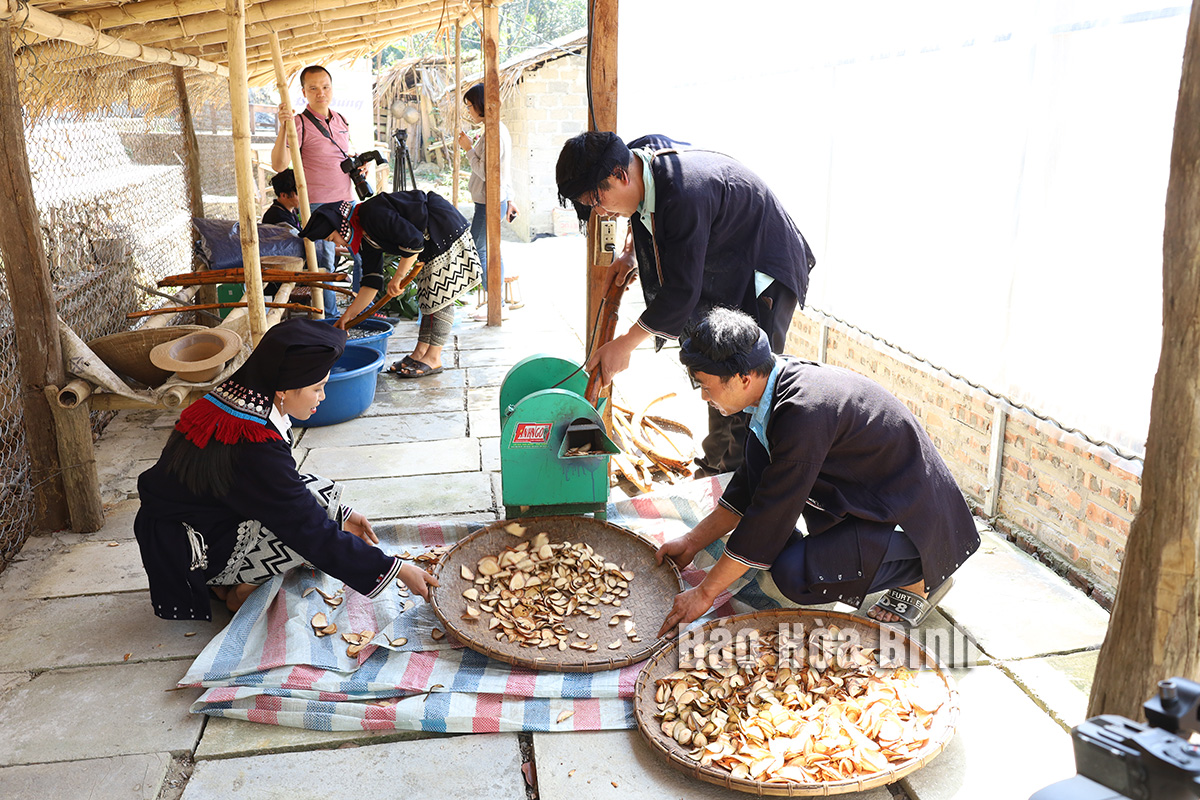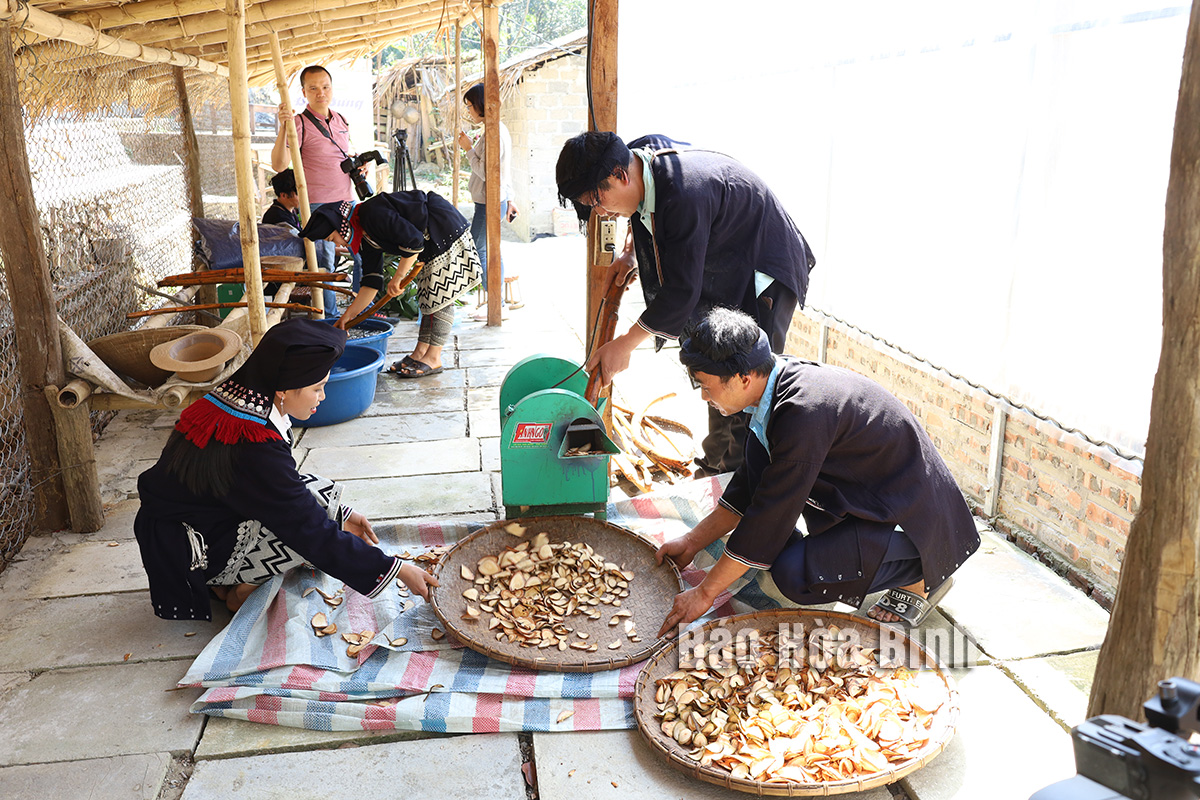
Boasting stunning landscapes, and standout cultural traits, many localities across Hoa Binh province have developed unique offerings to bolster rural tourism.
Activities of the herbal medicine production group in Sung village, Cao Son commune, Da Bac district have been an attractive tourism offering for visitors.
A wide range of new offerings have been developed in Sung village in Cao Son commune, Da Bac district, renowned for its untouched landscapes, and excellent cultural practice and customs of the Dao ethnic people, with the support of a non-governmental organisation.
The village set up brocade weaving groups, and herbal medicine and "do” paper production teams to serve visitors.
According to Ly Thi Nhat from a brocade weaving group, the establishment of the groups help locals introduce their products to visitors and create new tourism products to improve their livelihoods sustainably. She said herbal massage balms, mosquito repellent sprays, and brocade bags, among others, have been favoured by many tourists.
Meanwhile, Ngoi village in Suoi Hoa commune, Tan Lac district, inhabited by the Muong ethnic people, has branched out its community-based tourism, attracting visitors from far and wide to experience local food, caged fish farming, and experience net fishing.
Hoa Binh is now home to more than 20 community-based tourism hamlets and villages, five of which have been recognised as three or four-star OCOP products. Many farms have provided lodging and experiential service for visitors, including An Lac Eco Farm Hot and Springs in Kim Boi district, and Happy Farm in Luong Son district. Furthermore, various agro-cultural tours have been set up in craft villages across the province.
Deputy Director of the provincial Department of Culture, Sports and Tourism Bui Xuan Truong said the province has accelerated its rural tourism development programme in recent years, with many high-quality offerings having launched to serve tourists.
However, the province has countered many challenges while carrying out the scheme such as inharmonious development of rural tourism infrastructure, and limited connectivity among tourism activities in many areas.
In the coming time, the province will provide resource support for rural tourism, with a focus on the training of the labour force, promotion of digital transformation, and enhancement of inter-sectoral coordination, and international cooperation in the area, while developing more OCOP products, and shaping up a value chain that engage experience tourism and eco-tourism, he added.
Located just a 20-minute drive from Hoa Binh City, Ora Hill Farmstay & Glamping Hoa Binh is a captivating new destination nestled in Mo hamlet, Bình Thanh commune, Cao Phong district. Combining farming with leisure, this tranquil retreat is perfect for those seeking balance, joy, and an immersive experience in the expansive beauty of nature.
Muong Bi - Tan Lac is renowned as one of the four famous Muong regions in Hoa Binh province. Blessed by nature with a favourable climate and stunning landscapes, Tan Lac holds great advantages for tourism development. The local tourism industry has made remarkable strides in recent times thanks to the attention and support from the local authorities and sectors.
With its strategic location, well-developed transport network, and diverse soil and climatic conditions, Hoa Binh is emerging as a must-visit destination in Vietnam's northwestern tourism corridor. The province boasts numerous attractions, including the Kim Boi hot springs (Kim Boi district), the Dau Rong cave complex (Cao Phong), the Mai Chau valley (Mai Chau), and the iconic Hoa Binh hydropower plant.
The northern mountainous province of Hoa Binh has been listed among the 71 most beautiful places to visit worldwide by the prestigious US travel magazine Condé Nast Traveller.
Hoa Binh province’s rich natural and cultural resources position it as a prime location for developing community-based tourism (CBT). In recent years, support from central and provincial policies, as well as assistance from non-governmental organisations, have encouraged local ethnic minority and mountainous communities to actively engage in the sector.



